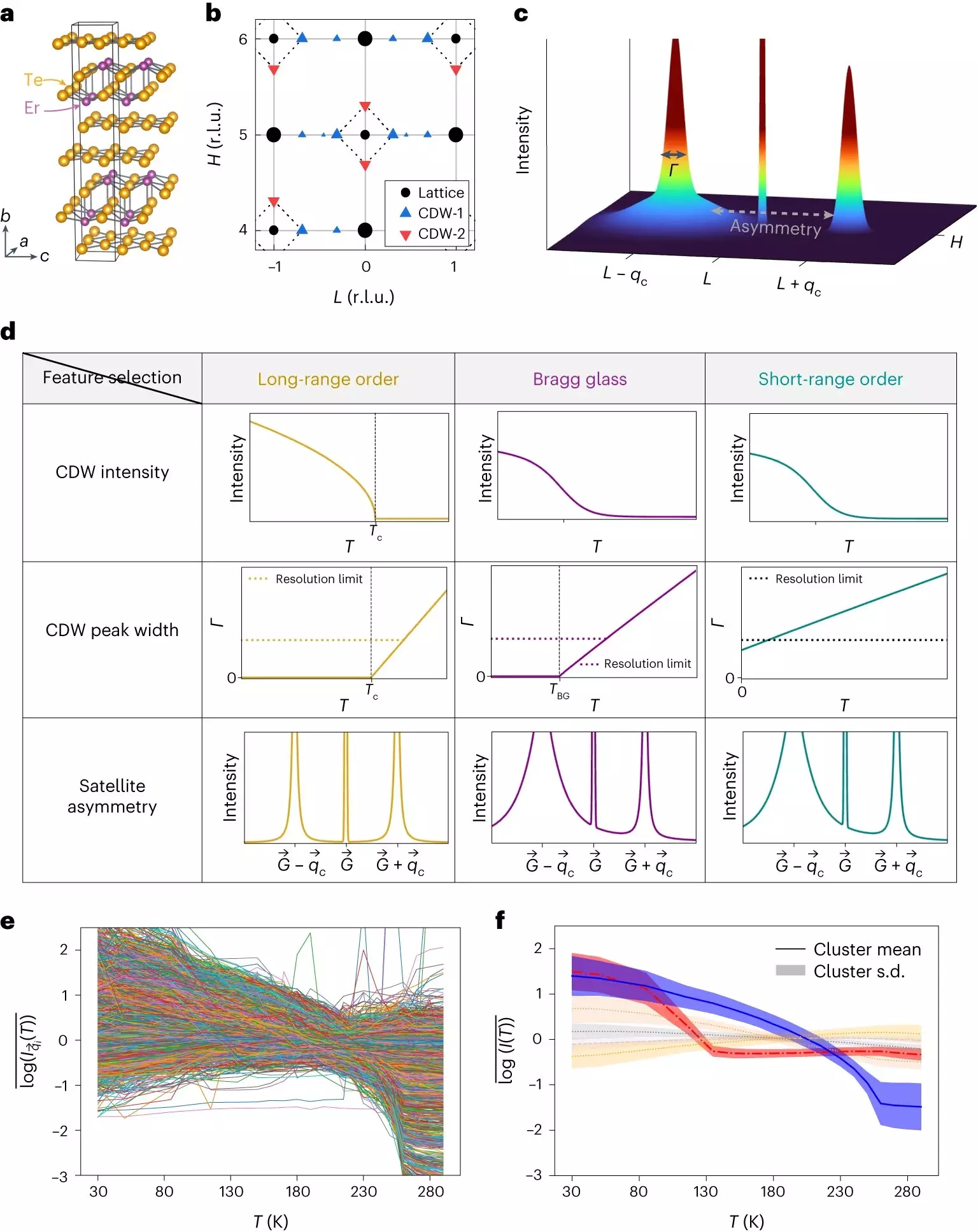In a groundbreaking development, researchers at Cornell University have successfully detected the presence of the Bragg glass phase, a previously elusive phase of matter, using a combination of X-ray data and a state-of-the-art machine learning data analysis tool. This discovery has laid to rest a long-standing question in the field of physics, providing tangible evidence of the existence of the Bragg glass phase in real materials. The study, titled “Bragg glass signatures in PdxErTe3 with X-ray diffraction Temperature Clustering (X-TEC),” has been published in the prestigious journal Nature Physics. Led by postdoctoral researcher Krishnanand Madhukar Mallayya, the team collaborated with scientists from Argonne National Laboratory and Stanford University to achieve this significant milestone.
The Bragg glass phase is characterized by an almost ordered state of matter that defies full crystalline symmetry. Until now, scientists had only been able to theorize its existence, with no experimental evidence to substantiate their claims. The Bragg glass phase exists between two distinct phases, namely long-range order and a completely disordered state. While the long-range ordered state manifests as an infinite continuation of charge density wave correlation, the Bragg glass phase exhibits a decay of this correlation that is so slow, it only ceases to exist at infinite distances. Researchers faced the challenge of detecting these subtle distinctions in experimental data, which were further complicated by issues such as noise and limited resolution.
Overcoming Challenges through Synergetic Approaches
To overcome these challenges, the research team adopted a synergistic approach that combined strategic material selection, meticulous data collection, and powerful machine learning tools. They collaborated with scientists from Stanford University to identify a family of charge density wave materials called PdxErTe3, which offered precise control over experimental conditions. The team then collected massive volumes of X-ray data at Argonne National Laboratory in partnership with Argonne scientists. Finally, they employed a cutting-edge machine learning data analysis tool known as X-ray Temperature Clustering (X-TEC) to analyze the vast quantities of data in a scalable and automated manner.
Revolutionizing Scientific Research in the Age of Big Data
The successful detection of the Bragg glass phase through X-ray diffraction represents a groundbreaking achievement. Beyond its scientific implications, this breakthrough heralds a new mode of research in the era of big data. By leveraging machine learning tools and adopting a data-scientific perspective, scientists can tackle complex research questions and unravel subtle signatures through comprehensive data analysis. The research team believes that this approach has the potential to revolutionize the study of fluctuations in scattering experiments by targeting them through a measure of “peak spread” obtained through X-TEC.
The discovery of the Bragg glass phase and the resulting phase diagram significantly enhance our understanding of the intricate interplay between disorder and fluctuations in materials. This breakthrough paves the way for further investigations into related phenomena and opens new avenues for future research. By building upon this success, scientists can expand their understanding of the fundamental properties of matter, thereby enabling the development of novel technologies and materials with remarkable properties.
The Cornell quantum research team’s groundbreaking detection of the Bragg glass phase using X-ray diffraction combined with machine learning data analysis represents a monumental achievement in the field of physics. This discovery settles a long-standing question regarding the existence of this almost-ordered state of matter, providing tangible evidence of its presence in real materials. By overcoming challenges through a synergetic approach and embracing the power of big data, this research exemplifies the potential of cutting-edge technology and multidisciplinary collaboration to unravel the mysteries of the universe. The implications of this breakthrough extend far beyond the realm of physics, opening up new avenues for scientific exploration and technological advancement.


Leave a Reply